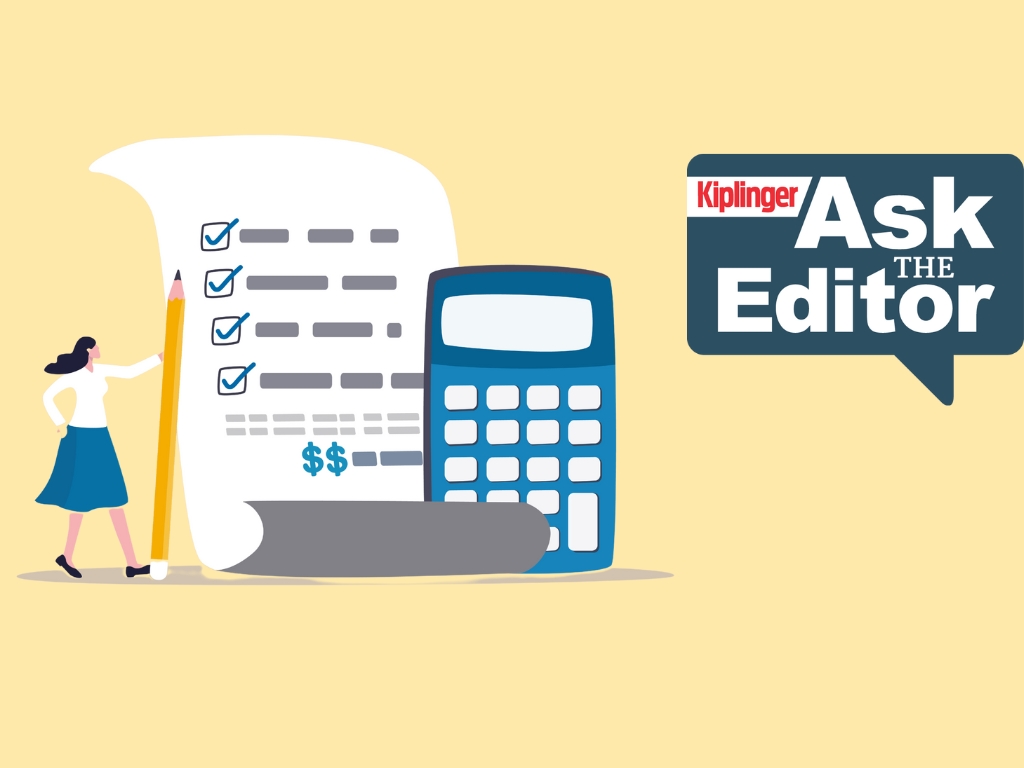3 Reasons to Consider Making Changes During Medicare Open Enrollment
Between Oct. 15 and Dec. 7, Medicare participants can make changes to their plan(s). Here are a few reasons you may want to take advantage of this open enrollment period.


Every fall, Medicare health and drug plan providers publish information on changes that will take effect the following year. As a result, people on Medicare have the opportunity to make the following types of changes to their plans during the open enrollment period, which runs from Oct. 15 to Dec. 7:
- Switch from Original (Traditional) Medicare (Parts A and B) to Medicare Advantage (Part C), or vice versa.
- Switch from one Medicare Advantage plan to another.
- Switch from one drug plan (Part D) to another.
You’ll notice this list does not mention Medicare Supplement (Medigap) policy changes. The open enrollment period for Medigap is the six months following your enrollment in Medicare Part B. After this period, insurance companies generally are not required to sell you a Medigap policy. If they do offer coverage after your open enrollment period, they may charge you higher premiums. Keep in mind that Medigap policies are only available to people who have Medicare Parts A and B, not those with Medicare Advantage.
There is also an open enrollment period from Jan. 1 to March 31, when you can change your Medicare Advantage plan. During that period, however, you can’t switch from Original Medicare to Medicare Advantage, or make changes regarding drug plans. For complete details, go right to the source — the Medicare website.
From just $107.88 $24.99 for Kiplinger Personal Finance
Become a smarter, better informed investor. Subscribe from just $107.88 $24.99, plus get up to 4 Special Issues

Sign up for Kiplinger’s Free Newsletters
Profit and prosper with the best of expert advice on investing, taxes, retirement, personal finance and more - straight to your e-mail.
Profit and prosper with the best of expert advice - straight to your e-mail.

Every Medicare participant should review their coverage at least annually. Here are three reasons you may want to seriously consider making changes:
1. You have Original Medicare and want to save money.
People enrolled in Medicare Advantage plans, on average, spend less on health care than those with Original Medicare. This includes a combination of premiums and out-of-pocket costs, along with drug coverage.
Estimated Annual Health Care Expenses for Individuals Ages 65 and Above
| Header Cell - Column 0 | Original Medicare (Parts A and B) and a Prescription Drug Plan (Part D) | Medicare Advantage HMO Plan That Includes Prescription Drug Coverage | Original Medicare (Parts A and B), a Prescription Drug Plan (Part D), and Medigap |
|---|---|---|---|
| 25th Percentile | $2,500 | $2,200 | $4,700 |
| 50th Percentile | $3,200 | $2,900 | $5,800 |
| 75th Percentile | $5,000 | $4,300 | $7,300 |
| 90th Percentile | $7,300 | $6,400 | $10,200 |
Source: Sudipto Banerjee. “A New Way to Calculate Retirement Health Care Costs,” T. Rowe Price, February 2019. Estimates based on projected 2019 Medicare premiums and data from the Health and Retirement Study (HRS). All costs are rounded to the nearest hundred. Percentile refers to the percentage of individuals with estimated expenses below these levels. For example, the 90th percentile line indicates that only 1 in 10 retirees with Medicare Advantage has estimated annual health care expenses above $6,400.
Medicare Advantage plans aren’t for everyone. Availability and costs vary widely by geographical area. Medicare Advantage plans generally restrict your choice of service providers. It’s also important to note that the expense differences above may reflect different levels of health care consumption across the three groups. Even considering these caveats, enrollment in Medicare Advantage plans has increased sharply in recent years because of the associated potential cost savings. If available in your area, they are worth considering.
2. You enrolled in a Medicare Advantage plan and realize you made a mistake.
As mentioned earlier, the downside to a Medicare Advantage plan is the limited provider network. You may not have fully appreciated the limitations when you chose your plan. Or you may have developed a new medical issue that requires specialists who aren’t available under your plan. Out-of-network medical care can be very expensive.
If you find yourself in this situation, open enrollment will give you the opportunity to consider other insurers’ Medicare Advantage plans, which may have better network options. In addition, if you switched from Original Medicare and Medigap within the past year, you have the option to switch back to your old Medigap plan. Just don’t wait more than a year — there’s no guarantee the Medigap insurance company will offer you a policy, especially if your health has worsened.
3. Your drug prescriptions (or coverage) have changed.
It is surprising how different the cost for a specific drug can be in two different drug plans. A plan that worked well for your prescription needs a year ago may be far costlier if you’ve added a new drug to your list. In addition, the plan can change its drug list (called a formulary). Formulary changes can take effect the next year, or sooner, such as when a generic equivalent is introduced. One positive change heading into 2020 is that the Part D “doughnut hole,” a confusing and potentially expensive coverage gap, will be completely eliminated.
The Medicare website offers a Plan Finder to help you shop for drug plans (Part D) and Medicare Advantage plans. It enables you to compare costs based on your specific prescriptions. You can also see what pharmacies are in-network, as well as plan “star ratings.” There’s a lot of information on the Medicare site, so be sure to set time aside to digest it all.
Medicare is a complex topic, and it’s important to understand your options. If you’re approaching Medicare eligibility age, or just want a refresher on your choices, check out our Planning for Medicare video.
Profit and prosper with the best of Kiplinger's advice on investing, taxes, retirement, personal finance and much more. Delivered daily. Enter your email in the box and click Sign Me Up.

Roger Young is Vice President and senior financial planner with T. Rowe Price Associates in Owings Mills, Md. Roger draws upon his previous experience as a financial adviser to share practical insights on retirement and personal finance topics of interest to individuals and advisers. He has master's degrees from Carnegie Mellon University and the University of Maryland, as well as a BBA in accounting from Loyola College (Md.).
-
 Nasdaq Leads as Tech Stages Late-Week Comeback: Stock Market Today
Nasdaq Leads as Tech Stages Late-Week Comeback: Stock Market TodayOracle stock boosted the tech sector on Friday after the company became co-owner of TikTok's U.S. operations.
-
 Disney’s Risky Acceptance of AI Videos
Disney’s Risky Acceptance of AI VideosThe Kiplinger Letter Disney will let fans run wild with AI-generated videos of its top characters. The move highlights the uneasy partnership between AI companies and Hollywood.
-
 Ask the Editor: Itemized Deductions
Ask the Editor: Itemized DeductionsAsk the Editor In this week's Ask the Editor Q&A, Joy Taylor answers questions on itemized deductions claimed on Schedule A of Form 1040
-
 Are You Putting Yourself Last? The Cost Could Be Your Retirement Security
Are You Putting Yourself Last? The Cost Could Be Your Retirement SecurityIf you're part of the sandwich generation, it's critical that you don't let the needs of your aging parents come at the expense of your future.
-
 I'm an Insurance Pro: It's Time to Prepare for Natural Disasters Like They Could Happen to You
I'm an Insurance Pro: It's Time to Prepare for Natural Disasters Like They Could Happen to YouYou can no longer have the mindset that "that won't happen here." Because it absolutely could. As we head into 2026, consider making a disaster plan.
-
 The Future of Philanthropy Is Female: How Women Will Lead a New Era in Charitable Giving
The Future of Philanthropy Is Female: How Women Will Lead a New Era in Charitable GivingWomen will soon be in charge of trillions in charitable capital, through divorce, inheritance and their own investments. Here's how to use your share for good.
-
 5 Smart Things to Do With Your Year-End Bonus, From a Financial Professional
5 Smart Things to Do With Your Year-End Bonus, From a Financial ProfessionalAfter you indulge your urge to splurge on a treat, consider doing adult things with the extra cash, like paying down debt, but also setting up a "fun fund."
-
 Are You a Gen X Investor? Here's How You Can Protect Your Portfolio From an AI Bubble
Are You a Gen X Investor? Here's How You Can Protect Your Portfolio From an AI BubbleAmid talk of an AI bubble, what's the best course of action for investors in their 50s and 60s, whose retirement savings are at risk from major market declines?
-
 Hey, Retirees: Put Your Charitable Gifts in a Donor-Advised Fund (and Enjoy Your Tax Break)
Hey, Retirees: Put Your Charitable Gifts in a Donor-Advised Fund (and Enjoy Your Tax Break)A donor-advised fund is a simple (really!), tax-smart strategy that lets you contribute a large, tax-deductible gift now and then distribute grants over time.
-
 If You're a U.S. Retiree Living in Portugal, Your Tax Plan Needs a Post-NHR Strategy ASAP
If You're a U.S. Retiree Living in Portugal, Your Tax Plan Needs a Post-NHR Strategy ASAPWhen your 10-year Non-Habitual Resident tax break ends, you could see your tax rate soar. Take steps to plan for this change well before the NHR window closes.
-
 Could Target-Date Funds With Built-In Income Guarantees Be the Next Evolution in Retirement Planning?
Could Target-Date Funds With Built-In Income Guarantees Be the Next Evolution in Retirement Planning?With target-date funds falling short on income certainty, retirement plans should integrate guaranteed income solutions. Here is what participants can do.